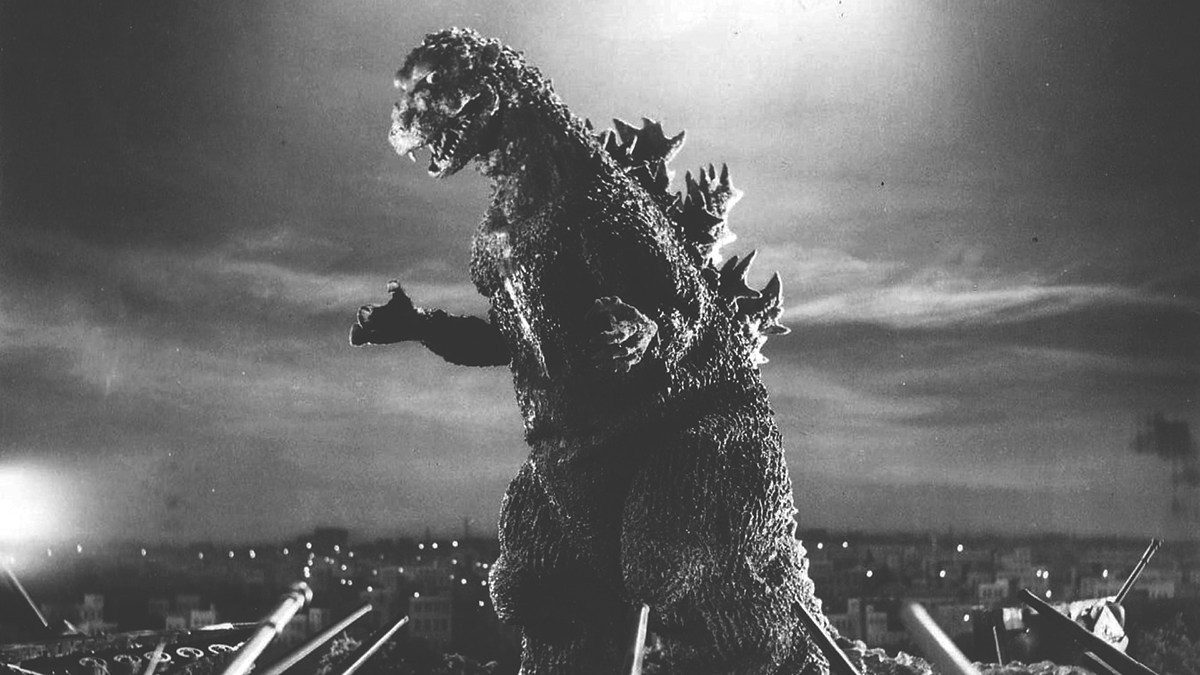1954 Japan, a giant sea-turned-land creature and a whole lot of symbolism. That, my friends, is Godzilla (Gojira) (1954).

I think this was the first black and white film, and first subtitled film I have ever watched from start to finish. Being a 21-year-old Australian, I tend to only watch films and television shows that originate in the US and Australia; sometimes ones from the UK sneak their way into the mix. Being exposed to a film that is as culturally diverse as Godzilla, and as far from my comfort zone as can be, really opened my eyes.
While watching the film, I remember thinking “what a cinematic masterpiece…”. I’m not going to lie when I say I was being a little sarcastic at first. But as the film went on and we were exposed to the film maker’s use of model work and post-film productions, such as the siren that alerted the city of Godzilla’s appearance, I really did start to believe that the film was kind of a cinematic masterpiece.
Scenes like Godzilla destroying the obviously teeny-tiny train made me chuckle but still had me intrigued with the methods film makers had to use in times where technology was limited. Audiences from this time period probably found Godzilla extremely dramatic, where a lot of us watching it now found it quite funny.
I thought I was going to struggle to pay attention throughout the film as it was subtitled, and I have a very short attention span – I think I have YouTube videos to thank for that now. I still remember sitting in my Year 9 Japanese class and not having any interest in the Japanese soap opera we occasionally watched.

This had me thinking that I wouldn’t have any interest in keeping up with what was happening and being said throughout Godzilla, but I found that even if I looked away from the screen for a period of time, I was still able to keep up. Most of this was due to the emotive acting and the loud sounds and near silence used throughout. I’m still quite amazed at how captivating the entirely silent scenes were. The overly staged and highly dramatic acting contributed to the viewing experience as it meant that I didn’t always have to rely on the English subtitles to understand what was happening in the scenes.
As someone who was never seen anything Godzilla related, I was completely ignorant to Godzilla’s significant representations of historical and socio-political events. Once the film was over, it became blindingly obvious what Godzilla, as a film and figure, stood for and represented at a time where Japan was struggling with who they were as a nation.
Godzilla contained themes that symbolised what the Japanese went through in World War II. At the time, Japanese viewers felt they were able to emotionally connect with the monster, which is quite contradictory for what you originally believe Godzilla stands for.
Director Ishirō Honda wanted Godzilla to be equal to an atomic bomb, filming the rampage as to mirror the atomic bombing of Hiroshima and Nagasaki. “The theme of the film, from the beginning, was the terror of the bomb. Mankind had created the bomb, and now nature was going to take revenge on mankind,” said producer Tomoyuki Tanaka.
Whether you’ve seen the modern-day version of Godzilla or not, Godzilla (1954) is one film you won’t want to miss.
Have you seen the original Godzilla? Let us know what you thought in the comments below.
This article was originally posted on Digital Asia/ Jess Muscat and has been modified for publication.







